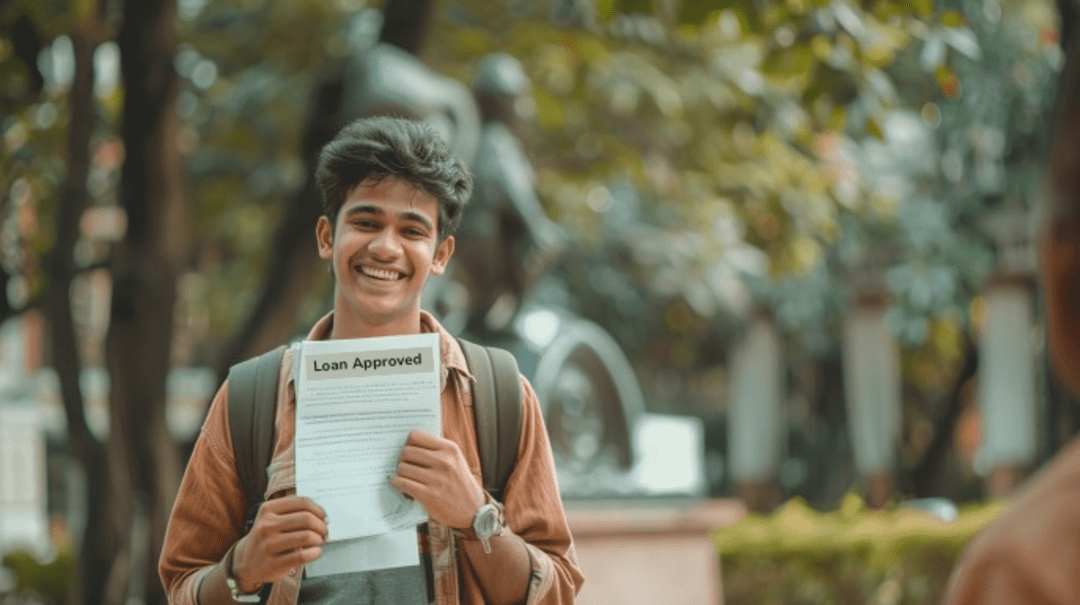Tips for Fresh Students in The USA

As soon as you get your acceptance letter to an American university, it opens up the world for you. You will soon study in one of the best educational systems and have access to unique opportunities that could launch your career. It is a dream come true for all of us, but it is also a life-changing experience that will make everything new and unknown. It is normal to be nervous about the trip, but you won’t feel that way forever. Here are a few tips for fresh students in the USA on adjusting as an international student, so you can get used to your new city and life as quickly as possible. QUICK FACTS: The US has been one of the top destinations for international students who have dreamt of studying abroad. Over the past few years, students from India and China have accounted for the maximum number of enrolled students. A recent SEVP report has revealed that a total of 47% of the total international student population in the US comprises Indian and Chinese students. While the international student numbers took a significant hit due to the pandemic, China and India still lead in student enrolment numbers in the US. The excellent news per the US Citizenship and Immigration Services is that the number of Indian students studying in the US increased by over 12% in 2021, while those from China dropped by 8%. Approximately 92% of active US visa holders applied for associate, Bachelor’s, Master’s, or Doctorate programs in the US. The number of higher degrees pursued by international students increased by 1,142,352 against 1,121,981 in 2020. A top institution like Lorien Finance could be where Indian students could get higher education loans from the US at the lowest interest rates. Not only this, but you get many added benefits like complimentary USA Bank A/C, debit card, and worldwide free calling with an international SIM card. The SEVP( Student and Exchange Visitor Programme) study data also highlighted that over 1.25 million active records in SEVIS have been reported for F-1 and M-1 students during the 2020 calendar year. In the US, the F-1 visa is offered to those international students enrolled in an academic program or an English Language program at one of the US universities; meanwhile, the M-1 visa is offered to those overseas students who are enrolled in a vocational or technical institute. So, if you are one of the aspiring students applying for the top US universities, we have a few tips that would come in handy while studying in a foreign land. The guide is to help boost your confidence and win over people’s hearts to achieve your goals amicably. Positive Attitude: First of all, take some time for self-talk and remind yourself of your purpose of being in the US to study. Remember all the hard work you have put into getting here. Filling out school paperwork, completing your visa requirements, and figuring out travel logistics took a lot of effort and determination. Be proud of yourself for making it happen. You got through the application process, and you can do this too. Non-academic Activities: If you feel sad, sign up for some non-academic activities that look fun or go to the gym. Try new foods, learn new expressions, and explore the neighbourhoods and attractions near your university. If you focus on what is in front of you, you will have less time to focus on your feelings of homesickness and isolation. Friendly Approach: YA friendly attitude attracts good friends who can shop, cook, laugh, and support you through unfamiliar social situations.. American friends will answer your questions, help you get through social situations in real time, and explain things that might be unfamiliar to you. Do not be afraid to take the first step and reach out to a classmate or someone in your dorm. Cultural Acceptance: Be open to cultural learning and acceptance. Don’t think of the new culture as good or bad. All the aspects of your new environment are part of its broader social system and contribute to its uniqueness. To adjust to the new environment, observe your surroundings and prepare to learn both inside and outside the classroom. Interact with people and discover as much as you can. Socializing: Socialising is a vital part of your experience. Socialising continues throughout an individual’s lifetime, and your experience in studying abroad will challenge you to develop your “people skills” even further. Keep in mind that your visit to the US may not last forever, so go out and socialize with others to get a whole American experience. Make sure you open up to new experiences. Orientation Sessions and Full-Time Therapists: Most universities conduct orientation sessions for new students to help them adjust to new surroundings. International students can always seek help from the admissions office or the International student office at the universities. Many universities employ full-time therapists trained to help international students find solutions to the challenges they might face Healthy Habits: Take care of your physical health by following a good diet and working out in gyms or parks. Being physically fit helps in reducing stress levels. Financial Management: Studying in the US is very expensive. Managing personal finances can pose a significant challenge for fresh international students.. Budgeting can be of great help. Keep a record of the expenses for the first few months to understand the expenditure cycle. You can look for a part-time job also to get some extra cash. Also, you should choose the course very judiciously. The course you will invest your time and money in should derive value from the education you are getting. Ethics and values are crucial for maintaining academic integrity, emphasizing honesty, trust, respect, and responsibility. Plagiarism, cheating, providing false information, lying, forgery, etc., are unacceptable in the American lifestyle. Lorien Finance is your friend in need in a foreign land to help you take control of your finances from day 1. You could open a US Bank A/C and debit card before you land in the USA! We also
Essential Tips for USA Study

Finally! Your dream to study in the USA is about to come true. You must be excited and nervous about embarking on this lifetime journey, especially to make the most out of it. After all, not everyone gets to live the “American Dream”! However, there are certain things you need to keep in mind before you fly to the country. So whether you’re going for your bachelor’s degree, master’s program, or even Ph.D., read this article to know essential things before traveling to the states for your study abroad trip! Research the Country First, you must research the country to know about its culture, people, weather, economy, government, etc. Remember, you can’t show up without having a basic idea about the country. It will help you cope with culture shock better and adjust quickly to your new life. Furthermore, you must also keep yourself abreast of the current affairs of the USA, read travel guides, and watch Hollywood movies. Besides, if you know someone living in the USA, it would be a cherry on the cake. They can tell you many tips and tricks about local life that you might not even find on the internet. Basic Habits and Etiquette Learning some of the essential habits and etiquette of the USA is crucial. Many things differ from culture to culture, and something considered polite in one country can be seen as impolite in another. For example, In Japan, tipping a waiter or waitress can be treated as an insult in many situations. However, in the USA, tipping is obligatory, and you may have to leave a gratuity of 15-25% to the waiter or waitress for their service. Another thing that you need to take care of while studying in the USA is maintaining punctuality. Americans value time, and any delay or lateness can be interpreted as rudeness. So, make sure to show up early anywhere, be it your college classes or any significant event. However, lateness can be acceptable in large social gatherings! Pack Light It is tempting to load your suitcases with everything you can think of, but you should always carry only essentials with you. There are many reasons to pack lightly! Firstly, airports have a luggage weight limit. If you exceed that, it will be chargeable. Secondly, carrying multiple bags to a foreign country is not convenient and puts you at risk of lost, damaged, or stolen luggage. Finally, you can always buy anything you need in the USA as almost everything is available here! Finances Now that you are moving to the USA be it in your student housing in New York or Los Angeles, you should do a few things to take care of your finances, like notifying your current bank about your plans to shift to the USA for your higher education. Otherwise, they will consider it a fraud, and you will get locked out of your account. Secondly, you should convert your money into US dollars at the local bank (preferably) or airport and take it with you. During the initial days, figuring out the ATM or bank might take some time, and you will need some money as soon as you arrive in the country, like paying for your cab fare, food, etc. Moreover, after having an address in the USA, you should open a local bank account there as it will be convenient and help you avoid foreign currency charges. Meanwhile, you can also get a traveller’s cheque or a forex card. Final Takeaway! Pursuing your higher education in the USA can be expensive, so instead of going straight for student loans, try applying for various scholarships. Besides, you can work part-time to offset the high cost of living in the country! Overall, the USA is a beautiful country to live in as an international student. It is almost always called the best study abroad destination in the world that helps students thrive personally and professionally. So savor this opportunity and make the best use of it. Do you want help in finding student housing abroad? Amber provides millions of students globally with the best and most reasonable options for booking accommodation. Our booking executives will guide you through the entire process of finding your ideal student accommodation at your desired location!
US Packing Tips: Organize Your Suitcase

Packing for long-term travel is never a simple task, especially when shifting base to an entirely new country. You’re uprooting your entire life and carrying it with you in a suitcase or two. So, it’s essential to pre-empt what matters to you and customize your checklist accordingly. Here are some US packaging tips to organize your suitcase, ensuring you maximize space and keep your belongings neat and accessible. It’s not just the essentials that you need to be packing for but also the things that will keep you close to your home, especially on days when you feel homesick. For those who have never traveled to the U.S., there are quite a few things that can come as a cultural shock. That’s why it is essential to categorize and make a checklist of items that will come in handy during the first few months when you land in the U.S. 1. The ‘I Miss Home’ Compartment Everything that reminds you of home – be it a favorite blanket, mom’s homemade aachar, or even a packet of Maggi. Anything that has a strong memory attached to it would do the trick. Sure, you’ll be starting a new chapter in your life, and you’d want fewer things that trigger the memory of home. But on days when those feelings inevitably wash you over, there’ll be a little piece of a house sprinkled around your room. 2. The Kitchen Compartment It’s important to pack the absolute essentials as you don’t want to lug around all that extra weight of utensils. Here’s what we suggest that you pack: 2.1 ROLLING PIN (BELAN) AND ROLLING BOARD (CHAKLA) As a student, you may not always get the time to cook, and in such situations, frozen-style naans are available in major American food stores like Costco and Wegmans. But if you plan on cooking your own Rotis, it’s better to stash the belan and chakla as they will easily fit inside your suitcase. 2.2 INDIAN SPICES You may not immediately find an Indian store in your vicinity, so it’s better to bring your own set of spices for the initial few days. Also, spices in India are comparatively low in cost, so you might save there until you find an Indian store where you can replenish the stock as and when necessary. 2.3 UTENSILS Most of the cutlery and utensils, like forks, spoons, pans, and knives will be available at an affordable rate across all major American outlets. A small Kadhai or Pressure Cooker is where you’d want to draw the line, as you don’t want all the big utensils to eat up all the space in your suitcase. 2.4 FOOD Again, we’d recommend that you stick to the items that won’t be available in the U.S. Most food items like rice, pulses, flour, beans, etc., are widely available at any Indian store in America. You may want to pack some homemade specialties like ladoos, aachar, papad, or ghee. No store products or restaurants can replicate the taste of homemade food. 3. The Health Care Compartment 3.1 MEDICINES It is important to note that a lot of over-the-counter medicines that are generally available in Indian stores are not available in the U.S. without a valid prescription. Plus, you may not get some medication altogether. Hence, we suggest you pack the basics: Crocin (for fever), Combiflam (for body pain), Gelucil (for indigestion), and Vicks Vapour Rub (for the common cold). It’s essential to carry your prescription medicines with you, at least for the first two months, until you get familiar with the American healthcare system. 3.2 EYEWEAR Word to the wise: It’s best to have the foresight and come prepared with an extra pair or two of your spectacles and contact lenses. Eyewear in the U.S. can empty your wallet faster than you blink unless you have a good insurance plan. 3.3 HOME REMEDIES (GHARELU NUSKHE) As Indians, we love our homemade churans, and Anardaana golis that aid in healthy bowel movements. No shame in carrying these super effective home remedies with you when venturing into a new country. Your gut will thank you on days when you’re feeling a bit clogged on the inside. 4. The Paperwork Compartment As immigration laws keep getting renewed and upgraded, it’s always best to stay one step ahead and keep all the necessary documents handy. Here’s a simple cheat sheet for all the critical documents you need to keep with you as a student in the U.S. 5. The Clothes Compartment While this may seem obvious because who would forget to pack clothes, it’s still important to be ready for every occasion. Don’t just pack your regular T-shirt and Jeans for college. If you’re pursuing a professional master’s course, chances are that you’d be wearing formals a lot more often for class presentations. Carry a pair of at least 3 formal shirts and 2 formal trousers with you and one complete set of a formal suit with a tie. Other miscellaneous items include Socks, Sweaters, Sunglasses, belts, Handkerchiefs, and Shoe Polish. Suffice it to say; that these are all optional as you can find them at your nearest apparel store in America. But better to pack them anyway. In conclusion, carry things that will be useful to you and eliminate all the unnecessary stuff. Most American airlines allow two check-in baggage, not more than 23 Kg each. So it’s essential to categorize each section and allot a fixed weight to it. While traveling to a new country for your master’s may be an exciting journey, the preparation can sometimes be challenging and daunting. That’s why it’s important to bring yourself to ask this question before you start to pack – will this item add value to my journey, and is it something that is of importance to me? While our list of things to pack for the U.S. may have ended, your journey to thriving college life in America is just beginning. So, kick back and get ready to take
Why Study in The U.S.A.?

For most Indian students, the seeds of studying abroad are planted right from childhood. Be it that one NRI cousin who is the object of every parent’s awe or the glorification and overexposure of western universities in the media, every kid wants a slice of that western college life. The dream of making it big and charting a stellar career often begins with the aim of enrolling in a prestigious university abroad. While it’s true that recognized universities exist all around the world, there’s a certain allure about the big American dream that puts the U.S. front and center for Indian candidates who want to pursue higher education abroad. So, why study in the USA? And more importantly, why should you pursue higher education in the U.S.? We have broken down the answer for you. 1. Flexible Choices There are several reasons why American colleges are considered top-tier for international students. But if we had to pick one, it would be the fact that one is free to choose different courses before declaring their major. This sets the U.S. apart from colleges in other countries, which insist students pick their major right when applying for college. Sometimes, colleges ask students to declare their major right when applying for the course. Not only does this restrict your freedom to switch your field of study later, but it also keeps you from exploring different subjects before you’ve made up your mind about which field you want to delve deeper into. It is in this regard that colleges in the U.S. give their students an advantage, by providing them a chance to explore their interests, before making a major decision. 2. Melting Pot of Cultures America is known as the melting pot of different cultures and that’s evident from their college classrooms. Every university, be it Ivy League or not, prides itself on having a solid diversity base regarding enrolment and admissions. This is not only an excellent chance for you to blend in with your unique heritage but also an opportunity to mingle with other cultures and gain a global perspective. If you get admission to a college there, chances are you’d meet many different students from different races and backgrounds. This allows you to nurture your openness to other beliefs and languages. 3. Opening doors to new careers A master’s degree from a reputed American university automatically opens doors to a lot of career opportunities. The holistic academic experience in the U.S. gives you an insight into different fields, thus broadening the scope of your career. In addition to this, American colleges also offer the highest salary around the world. Even when you apply for an education loan from Lorien to study in the U.S., the credit decision is based on this future employability, so you can pay back all the dues within the first 2-3 years of working. Even if your goal is not to settle in America, coming back home with a Master’s degree from the U.S. automatically makes you a desirable candidate for many global companies back home. 4. Networking Getting an MBA from a reputed college in the U.S. not only opens doors to great learning but also allows you to connect with future marketers, entrepreneurs, and tech wizards, who all might be sitting next to you in your classroom. Networking with classmates will give you a lifelong advantage in whichever field you choose. In conclusion, getting an MBA from the U.S. has a lot of benefits, but if finance is coming your way from getting into your preferred college, don’t let it be a roadblock. Get in touch with us at lorien.finance, where we connect US capital markets with Indian students by providing them with low-cost financial services.
How to Apply for Study F-1 Visa

Getting admission into a college in the U.S. is a milestone for many international students. It holds a promise of great things to come and a curtain call to all the hard work you’ve put in over the past few months. Anyone who has gone through the rigorous process of college applications and GREs knows what we’re talking about. So, when you finally get in, it feels like a grand feat, as it rightly is. But getting admission into the college is just half the battle won. Not to deter your spirits, but a significant challenge is to apply for your student visa so you can step foot inside the college of your choice. That’s why we’re here to break down the process for you step by step so you don’t have to face any roadblocks. But before we move on to the following steps, let’s get a brief understanding of the types of Visas there are out there. 1. F1 Visa This is for students applying for a bachelor’s or master’s degree, which involves more than 18 hours of study per week. In this blog, we’ll cover how to apply for the F-1 visa, as it’s the most commonly used visa by international students. 2. J1 Exchange Visitor Visa As the name suggests, this visa is for students, scholars, or lecturers visiting the U.S. under an exchange program. This visa is usually pursued by professionals visiting America on an exchange program for their fellowship or research. 3. M1 Vocational Visa M1 Visa is meant for students attending a vocational or technical school. While the process of applying for the F-1 and M-1 Visa is similar, the M1 visa has a stamp of time limit on it, which means you cannot overstay the visit. Now that we’ve got this out of our way let’s go over the process of applying for an F-1 student visa. STEP 1 Surprise, you’ve already done step 1 by securing a seat at that coveted university in America. Once you’ve been accepted by an accredited university, the college will provide you with an I-20 form that will certify that you’ve been enrolled in a full-time study program there and have substantial financial resources to support your stay in the United States. Due to the ongoing Covid-19 pandemic, the U.S. immigration department has given American colleges the option to send the I-20 form electronically over email. STEP 2 The next step is to pay your SEVIS fee (Student and Exchange Visitor Information System), which is approximately $350 or Rs 26,390. We’d recommend that you pay the fees online through a credit card since the alternative is to pay by a bank cheque which could take up to weeks. If you’re wondering about the purpose of the fees, it’s a maintenance fee that you pay to the U.S. Department of Homeland Security which maintains an internal record of the international students in the U.S. STEP 3 After you’ve successfully paid your SEVIS fee, it’s time to fill up the DS-160 form. Be sure to read the guidelines for filling up the DS-160 form thoroughly. You only get one chance at this because once you’ve submitted the form, you won’t get a do-over. If you’re unsure how to go about it or are confused at any stage, it’s best to consult an immigration lawyer. STEP 4 You’re one step closer to securing the Visa appointment. All you have to do is go to the VISA fee age and submit a fee of $160. To pay your visa fee, you can choose the following options: Make a note of your receipt number after the transaction, as it’ll be necessary for the next step. STEP 5 It’s time to schedule your Visa appointment. You’ll have to book two appointments, one at the Visa application centre and the other at the embassy. The waiting time for the interview can vary from country to country, and it can even take up to several months sometimes. So it’s best to schedule your appointment at the earliest. Scheduling your visa appointment at the embassy or consulate would require you to keep three things handy: STEP 6 For your appointment at the Visa application centre, you must bring the following documents: A valid passport, DS-160 confirmation form, appointment confirmation page, and one photograph as specified by the U.S. visa guidelines. This is where you’ll be required to get your photo clicked for the Visa and scan your fingerprints. For your visit to the U.S. embassy or consulate, you will need the following documents: A printed copy of your appointment letter, DS-60 confirmation page, current and old passports (if any), and Supporting papers as per your visa type. This is where the interviewer will ask you questions about your colleges, finances, the intent of coming back, etc. Apart from this, we suggest you keep all your other essential documents handy, like all the confirmation payslips, mark sheets, certificates, interview appointment letter, I-20 sent by the college, etc. And that’s it; if you follow all these steps correctly, chances are you’ll be well on your way to the U.S. to study at the college of your choice. While the U.S. Department does not disclose the number of accepted and denied applications, it’s in your best interest to seek guidance from others every step of the way. Anything that involves a lot of paperwork also leaves scope for human error. That’s why it’s crucial to cross-check everything twice before submitting and asking for help wherever you feel stuck. With that, we at Lorien finance wish you all the best in your Visa application process.
Indian Students’ Guide: First Month in the US

We know how much your dream to study in the U.S. means to you. But we also understand that shifting base to another country is not an easy task. Indian students often grapple with several adjustments during their first few weeks in America. New people, new climate, new culture, new friends—it can be a little too much to take in all at once. Especially if you’re close to your family, and given that you’re Indian, it’s a safe bet to assume that you are. That’s why our Indian Students Guide for the First Month in the US emphasizes the importance of acclimating yourself before stepping foot in the land of the free. Both India and America are deeply set in their ways and that’s partially the reason why both countries have such strong values. But if you switch from one nation to the other, you need to come prepared. That’s why we’ve created a cheat sheet for you. A survival guide for the average Indian student to survive their first month in the U.S. Long story short, if you follow these steps, your transition to the U.S. will be a smooth and easy journey. 1. Do Your Research This goes without saying, but we’ll say it anyway—there’s no such thing as too much research when you’re about to shift to a new country, especially for two years. As part of the Indian Students Guide for the First Month in the US, you’ll need to know about the climate of the place you’ll be living in and pack accordingly. If the area experiences peak summers and winters, bring a wide variety of summer cottons and winter wools. If you know someone—like a friend or a relative—who’s already living in the same area, get in touch with them for insights. How long do monsoons last? Is there going to be snowfall? How much does the temperature fluctuate? No question is too small. Additionally, do a quick online search to find any Indian stores near your locality for replenishing groceries and spices. It’s also wise to connect with your university counselor to find out about other Indian students attending the college with you. We’re not suggesting you always stick together as a clan and avoid mingling with others, but having a little relatability during those initial days can really help. 2. Brace Yourself for The Culture Shock If you take the first step right, your research will tell you that America differs from India in many ways. For instance, the option of vegetarianism is not widely available when it comes to food choices. Although American states are catching the new wave of veganism quite rapidly, it’s still difficult to find variety in veg food. So, if you’re a vegetarian, we’d suggest you already figure out a game plan beforehand. Another thing that comes across as a shock for most Indians is that cabs are a luxury for the elite. The public uses the subway metros and other public transport daily to get from point A to point B. If we come down to listing it all, we’ll need another blog to write all the things that can come to you as a culture shock about the U.S. But more on that later. 3. Get a Job Right Away If you’re a student in the U.S., chances are you will have to do a part-time gig or two to maintain your daily expenses. America is not a cheap country so it’s a common sight in the U.S. for students to do part-time jobs to earn a little extra pocket money. And unlike in India, doing a small job as a busboy at a restaurant isn’t looked down upon. So, don’t go down the road of what people will say. Doing a part-time job in college will teach you a valuable lesson in money and time management. No amount of theoretical reading can give you that. So it’s vital that you get your hands dirty and get a job right away to support yourself while studying. 4. Open a Bank Account A wise person would get a bank account in the country as soon as they land to pay their bills and keep their money safe. But a wiser person would get a bank account even before landing in the U.S. Ask how? With the help of Lorien Finance, we help Indian students open a U.S. bank account and provide a debit card, so you can easily manage all your finances without the hassle of lugging the extra cash. The best part is that you don’t need a social security number or a past credit history to open a bank account. You can read more about our U.S. bank account here. (backlink) 5. Network to Make Things Work If you’re a foreign student in the U.S., this will be crucial in deciding how the next 2 years of your life pan out. Not only from a professional standpoint but even a social point of view. If you’re an introvert who doesn’t like to initiate conversations, you’ll have to work and build your communication skills. You can’t survive two years in a foreign land by staying in your bubble. It’s important to socialize from the get-go and find your tribe in the coming months. It’ll not only help you to find like-minded friends but will also open more academic opportunities. The more you engage with your classmates, faculty, and professors, the more opportunities will come your way. 6. Learn to Cook If there’s one thing that you should take from the blog, without a doubt, it’s this. No other skill is as essential to survive in the U.S. as cooking. You can’t survive every day on take-out food. It’s better to prepare your meals and eat healthier, richer food. It’ll not just save you money but will also make you self-reliable in the eyes of your peers and family. Not to mention, if you are not a meat eater, you will have a tough time
Importance of Education Loans for Study Abroad

Be it India or America, education is becoming expensive year after year, especially for post-graduate courses. In such a scenario, students who wish to study in the U.S. tend to eat into their savings to pay for their college tuition. But not many people have the luxury of having a college trust fund or parents with a sizable chunk of money set aside. For them, education loans for study abroad are a blessing, as they allow them to fulfill their dreams even with limited means. It gives these talented young students a chance to stand neck-to-neck with the global students and bring their unique brilliance to the forefront. It aims to empower young minds who are only bound by limited financial means and gives them the wings to soar high in the sky. Let’s look at other reasons why an education loan is a must-have if you plan and know about the importance of an education loan for studying abroad. 1. Saving your parent’s savings Indian parents spend their entire lives saving hard-earned money for their children’s college funds in the hopes of seeing their child study at a prestigious university someday. These savings often come at the price of their wishes or money they could have otherwise spent comfortably by them in their retirement. Taking an education loan to finance your studies relieves your parents from the stress of taking a significant financial burden on your behalf and frees up their life savings which can now be used as they deem fit. It puts the onus on you and your ability to pay back the loan in the years to come. 2. Shaping Your Credit Score While the concept of a credit score may not be as popular here, in foreign countries, it is pretty relevant. A loan to finance your education is a sure-shot way to build your credit score in America. All you need to do is ensure that you pay all installments on time to guarantee a stellar credit rating. People use their high credit scores to secure funds in the future whenever the need arises. It symbolizes your ability to repay the loan in the agreed-upon time without any delays or defaults. 3. Quick & Easy Visa Approval In most countries, including America, the visa authorities want to ensure that there’s a steady flow of funds and that the source of these funds is reliable. When public sector banks or trusted lenders support the loan, they automatically enhance the student’s profile, making the student a more worthy candidate in the eyes of the authority. Thus, a student who secures an education loan for studying abroad has a better chance of obtaining a visa quickly than a student who self-finances their studies. 4. Covering all The Bases When you take an education loan to sponsor your college, it funds not only your tuition fees but also covers travel expenses, study materials, accommodation, and more. And if you take an education loan from Lorien finance, we also throw in a free flight ticket to the U.S. Not only that, we wire the tuition fee directly to your university before each semester, so you don’t have to take the extra stress of going to the bank and making the payment or risk forgetting and becoming a defaulter. 5. Tax Benefits This is a frontrunner factor when deciding on taking an education loan for study abroad. Under section 80E of the Income-tax of India, the interest on an education loan is subject to a tax rebate. This makes the foreign education loan a viable scheme for your parents, who can juice the benefit of the tax rebate emerging from the interest you pay on loan after every period. If you’ve made up your mind to secure an education loan to finance your studies in America, then you’ve come to the right portal. Lorien Finance not only makes securing the loan quick and easy, but it also offers competitive interest rates as low as 3.39%*. To know more about our education loans, click here.
